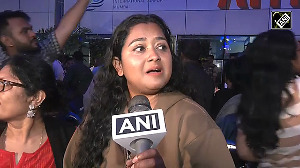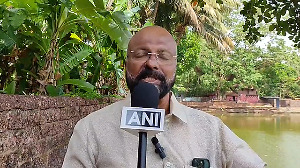"The power brands strategy has worked very well for us."
Adi Godrej, chairman, Godrej group
"With the implementation of the power brands strategy almost complete, we have shown both topline and bottomline growth in this quarter."
D Sundaram, finance director, Hindustan Lever Limited, after announcing Q3 2005 results
"We benefited by dropping brands with low profit margins or moving out of categories that were not growing."
Harsh Mariwala, chairman and managing director, Marico Industries
Three men, one voice. Indian fast moving consumer goods companies like HLL, Godrej Consumer Products Limited and Marico Industries are completely sold on the concept of "power brands".
But in their rush to put their best brands forward, are these big companies in danger of overlooking the potential offered by some of the also-ran brands?
It's been almost five years since these three FMCG giants opted to manage their brand portfolios on the basis of the power brand strategy. How have they fared? And what does the future hold?
Why power brands?
In 2001, HLL decided to put its marketing resources behind 30 power brands out of a bouquet of 110. Of these select brands, the top five brands of the company contributed more than Rs 3,000 crore (Rs 30 billion) to the company's turnover (close to 30 per cent of sales).
So what did it take to be a power brand? In a nutshell - size, brand strength, uniqueness and growth potential. The thinking in HLL? Helping brands grow under the prevailing market conditions required scale.
Even in 2001, the Indian FMCG market was crowded. More than 3,000 advertisements were beamed on television every month, while stock-keeping units at retail outlets had increased by over 40 per cent, in just three years.
Unfortunately, for the most part, shop sizes remained the same. Which meant in-store displays - critical for impulse purchases - suffered. Even the plethora of television commercials wasn't helping the FMCG cause: it was difficult for brands to stand out amidst the clutter.
For others like Marico, GCPL or Dabur, too, "getting more from fewer brands" became the magic mantra. In 2002, GCPL decided to focus on five brands in a bid to sustain growth; since these five contributed more than 90 per cent of the company's total sales, that strategy made eminent sense.
Around the same time, Marico decided to exit from slow-growth, low margin sectors such as Sweekar edible oil and Sil jams. Instead, it chose to stick with brands like Parachute, Saffola and Hair & Care.
Was the approach correct? Arindam Banerjee, professor and chairman, marketing area, Indian Institute of Management, Ahmedabad, agrees cautiously. "Power branding counters brand dilution by allocating organisation resources on lesser but more secured marketing investments," he explains.
Adi Godrej is more emphatic. "[Power branding] is not to prevent dilution of brand, but to prevent dilution of the company's focus. If a company has 10 brands and tries to support all of them, focus on the important brands would be diluted."
Top to bottom
Has it worked out quite the way these companies anticipated? Global marketing experts aren't too bullish about a power brands strategy's impact on the balance sheet.
"Power brands will have an impact on the bottomline of companies, but not necessarily on the topline growth," says Nirmalya Kumar, director, centre for marketing, and co-director, Aditya V Birla India Centre, at London Business School.
Jagdish Sheth, Charles H Kellstadt Professor of Marketing, Goizueta Business School, has a slightly different viewpoint. "You may have problems in the short run, but these can be ironed out in the long run. Introducing brand variants will help."
Consider some numbers. Between 2001-02 and 2004-05, profits at GCPL increased 19.66 per cent, from Rs 41.98 crore (Rs 419.8 million) to Rs 86.07 crore (Rs 860.7 million). Over the same period, turnover went up less than 4 per cent, from Rs 520.47 crore (Rs 5.2 billion) to Rs 603.46 crore (Rs 6.03 billion).
"This is clearly unsustainable," says an analyst. In sharp contrast, Marico has shown significant hikes in both turnover and profit from 2002 to 2005. While sales climbed from Rs 671.08 crore (Rs 6.71 billion) to Rs 953 crore (Rs 9.53 billion), profits increased from Rs 49.32 crore (Rs 493.2 million) to Rs 73.79 crore (Rs 737.9 million).
For its part, HLL has been plagued by flat or declining growth for some time now. Between 2001 and 2004, profits plunged more than 22 per cent {Rs 341 crore (Rs 3.41 billion)}, while turnover dropped by Rs 892 crore (Rs 8.92 billion).
The troubles magnify when specific categories are considered. Toilet soaps, for instance, contributed 24 per cent of HLL's sales in 2004, with sales value increasing marginally from Rs 2,089 crore (Rs 20.89 billion) to Rs 2,380 crore (Rs 23.8 billion). But sales volumes had actually declined, from 384,000 tonnes in 2001 to 368,000 tonnes, indicating that the growth was mainly on the back of price hikes.
The story was repeated in reverse in the detergents sector, where HLL had three power brands (Surf, Rin and Wheel). Sales volumes increased from 892,000 tonnes to 930,000 tonnes, but sales value crashed from Rs 1,975 crore (Rs 19.75 billion) to Rs 1,872 crore (Rs 18.72 billion), thanks to the price wars with Procter & Gamble.
The lesson? Power brands may be "powerful" to the company or the retailer, not necessarily to the consumer. Not everyone agrees. Counters a senior HLL executive, "The impact was because of the migration phase to power brands - sales of non-power brands declined." He adds that the company's power brands strategy will boost both topline and bottomline growth in the future.
Variety, variety
It doesn't help that India isn't just one, big market: it's several hundred. Brooke Bond tea may be a power brand for HLL, but it doesn't face the same enemy in every market in the country: if Wagh Bakri rules in Gujarat, Girnar and Sapat vie for the top honours in Maharashtra.
Making matters worse is the fact that rural India is an entirely different nation when it comes to preferences. That's a problem GCPL, too, faces; at present, rural sales account for just 30 per cent of the Rs 603.46 crore (Rs 6.03 billion) company's sales, but the company expects that figure to go up substantially in the coming years.
Marico's Mariwala agrees that penetration is difficult to achieve with a power brands strategy. Consequently, segmentation takes a hit, because you don't have 20 brands for 20 different people.
"As a brand grows larger, it simply cannot mean everything to everybody," agrees London Business School's Kumar. There is a way out, though. Kumar points out that a power brand strategy allows a company the luxury of targeting fewer segments, but the more profitable segments.
HLL found another way. In addition to its 30 national superpowers, it also has 10 regional jewels. HLL executives point out that with fewer brands on which to focus, the company will be able to manage its marketing spends better.
Godrej is attempting to beat regional diversity at its own game. For instance, when toilet soap Godrej No.1 entered the sub-popular category in 1998-99, it had only one offering: rose.
It soon also introduced its first variant, sandal, which has proved popular in the southern markets. The rose variant finds takers in northern states such as Uttar Pradesh, Bihar, Punjab, Madhya Pradesh and Rajasthan.
One, two, three, you go free
If the rural-urban divide cuts into the aspirations of power brands, the changes in the urban shopping landscape renew hopes. Most analysts expect shoppers to throng to malls and hypermarkets, for everything from electronics and clothing to groceries.
As the shopping landscape changes in India and malls look down upon hole-in-the-wall outlets, power brands could be an answer. According to HLL, at present just 3 per cent of Indian customers shop through organised retail outlets. The average in Asia -- 30 to 35 per cent.
How will organised retail help power brands? In developed markets, all brands, leaving aside the top three sellers, have to buy space on retailer shelves. Since private labels get a free ticket to the shelves as the third brand, it is important to be a No. 1 or No. 2 in a category.
Marketing experts claim that large-format retailers have changed the destiny of companies in foreign countries. Sheth refers to P&G's experience in Canada. In that market, rival Unilever was a market leader with loyal customers, while P&G wasn't doing all that well.
When Wal-Mart entered Canada, it changed the complexion of the market. Wal-Mart provided P&G a much-needed distribution channel. In five years, P&G gained significant market shares in Canada. "When a Wal-Mart happens to India, the power branding companies will reap better benefits," says Sheth.
That's because organised retail formats will provide more display space to power brands, their extensions and variants: and marketers believe that whatever gets seen, gets sold. That's not happening at present. Remember, more than 90 per cent of grocer shops in India are cubby-hole outlets.
So, what's the final take-away? Will a power brands strategy work in the future in India? The answer: it depends on the category, the market and the consumer. Now, where have we heard that before?
Power brands in perspective
Power brands as a concept came into existence by seeing the retailer as an economic partner. When a P&G executive paid a visit to Japan, he saw the respect and importance given to retailers -- something that was not happening in the US where there were several layers in the distribution channel.
Later, when Wal-Mart emphasised that it was the largest customer for P&G and the company could work closely with the retail chain and reduce costs in its supply chain, P&G started power brand projects with Wal-Mart, K Mart and others.
The principle was simple. Brands were rationalised to support the super retailer. In 1999, P&G's arch-rival Unilever decided to focus on 400 out of its 1,600 strong brand portfolio.
Two years later, Unilever's Indian arm, too, adopted the same strategy. Hindustan Lever decided to spend on only 30 brands and 10 regional brands from its original basket of 110 brands.
Other Indian companies, too, decided to follow the power brands strategy, including Godrej, Britannia, Dabur and Marico.
Recently, Vijay Mallya's United Spirits also joined this group by naming Director's Special, Antiquity, Bagpiper, McDowell No 1, Signature and 10 other brands as power brands.







 © 2025
© 2025